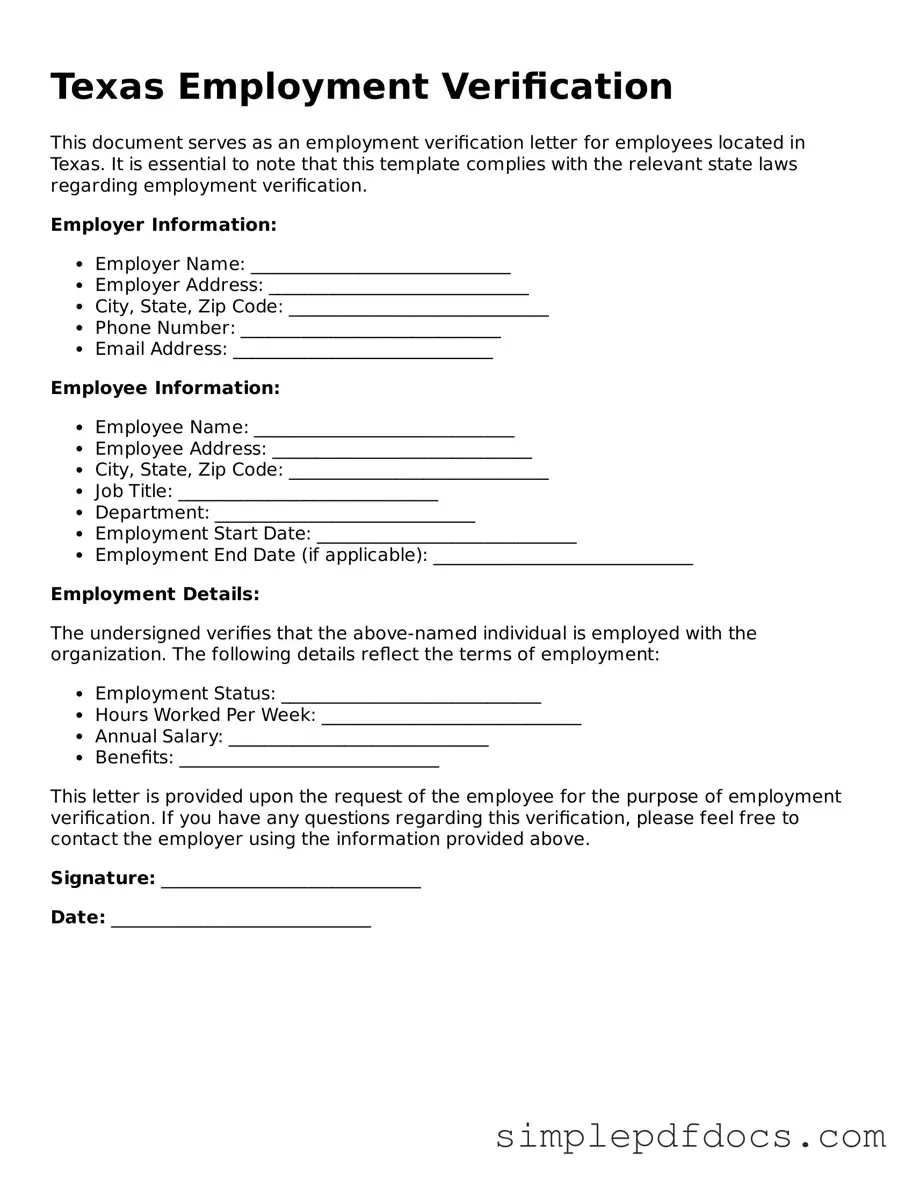The Texas Employment Verification form plays a crucial role in the employment process for both employers and employees. This document serves as an official record confirming an individual's employment status, which is essential for various purposes, including loan applications, rental agreements, and government assistance programs. Employers are required to provide accurate information about the employee's job title, dates of employment, and salary details. Additionally, the form may require verification of the employee's eligibility to work in the United States. It is important for employees to ensure that the information provided is correct and reflects their work history accurately. Completing this form promptly can facilitate smoother transactions and help avoid potential complications in employment-related matters. Understanding the nuances of the Texas Employment Verification form is vital for both parties to maintain transparency and compliance with state regulations.
